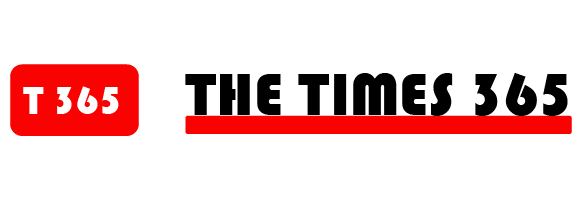Last Friday, the index reached a new all-time high, up 1.80% over a 30-day period. This was despite the fact that Federal Reserves Chair Jerome Powell admitted that elevated immigration levels contributed to a weakened labor market.
On October 4th, the Bureau of Labor Statistics is scheduled to release September’s jobs report. The expectation for the unemployment rate is 4.3%, above August’s 4.2% and 0.5% above the year-ago period.
If there are any big surprises, the stock market could experience greater volatility, especially if a hard recession outlook becomes a more likely scenario. But the overall trend remains the same. Even if investing at all-time highs, the average cumulative S&P 500 returns are greater vs picking exposure on any day, per J.P. Morgan Private Bank data from 1988 to 2020.
One of the keys is to pick value stocks that typically have lower price-to-earnings (P/E) ratio compared to growth stocks. Now benefiting from stabilized inflation and lower interest rates, investors should watch for these three undervalued stocks for long-term gains.
Pfizer
By mid-year, five US states initiated legal proceedings against Pfizer Inc (NYSE:) related to the C19 vaccination rollout. Yet, in the last six months, PFE stock went up 4.5%, now priced at $28.99 per share against the 52-week average of $28.66. At the very 52-week bottom, PFE stock only suffered a $25.20 dip.
This suggests that lawsuits against Pfizer are unlikely to succeed, in part owing to the Public Readiness and Emergency Preparedness (PREP) Act that gives legal immunity to vaccine manufacturers. In the meantime, Pfizer has been busy expanding its portfolio of assets for future drug rollouts.
In the last two years since the pandemic narrative winded down, the company acquired Biohaven Pharmaceuticals, ReViral and Seagen. All three acquisitions were worth $55.1 billion, paving the road for entrenching Pfizer’s market positioning in antiviral treatments, oncology and neurology.
Relative to its pharma competitors, Pfizer holds a leading market share of 9.9% as of Q2 2024, ahead of Abbott Laboratories (NYSE:) and Amgen (NASDAQ:). As of latest July 30th data, Pfizer’s drug pipeline includes 113 candidates, of which 33 are in Phase 3, with a focus on innovative cancer therapies.
At that time, Chris Shibutani of Goldman Sachs upped his PFE price target from $31 to $34 per share. The present average PFE price target is $32.75 vs high ceiling of $45 per share. Considering Pfizer’s significant diversification and potential for drug hits, the bottom outlook of $27 per share, close to the present price of $28.99, makes for a solid long-term pharma exposure.
Vitesse Energy
Borderline value stock, Vitesse Energy Inc (NYSE:) holds a relatively high P/E ratio of 15.62. Compared to traditional oil and gas operators, the company has a significantly higher profit margin of 80% against the sector average of 44%. That’s because Vitesse doesn’t suffer the cost of actual drilling for oil and gas.
Rather, the company engages in oil and gas field acquisitions for them to be developed by other industry leaders, such as Continental, Whiting, Burlington (NYSE:), Hess (NYSE:), Exxon Mobil (NYSE:) and others. For that purpose, over 80% of Vitesse’s assets are still undeveloped locations.
Partnering with over 30 operators across 7,000 oil wells, this enables Vitesse to also offer an exceptionally high dividend yield of 8.73%, at an annual dividend payout of $2.10 per share. As of Q2 2024 earnings, the company generated $10.9 million net income vs $9.6 million in the year-ago quarter.
Vitesse holds $114.8 million in net debt (deducted from cash on hand from revolving credit) vs $778.4 million in total assets. Against the 52-week average of $23.38, VTS stock is currently priced at $24 per share. The latter is also the stock’s bottom outlook while the average VTS price target is $27.15 per share.
Alongside Vitesse’s unique business model, this makes VTS stock worth considering on the basis of high dividend yield alone.
Campbell Soup Company
For extra safety in case of a hard recession, it is valuable to have a defensive stock exposure. Although the company’s name suggests a product focus, Campbell Soup Company (NYSE:) holds 15 well-established brands, from Swanson and Prego to Pepperidge Farm.
Compared to more cyclical stocks, CPB fairs better during economic downturns that require interest rate cuts as consumers shift priorities to essential goods. At the end of August, Campbell reported its fiscal Q4 2024 results, showing an 11% YoY increase in net sales to $2.3 billion.
This was largely attributed to the acquisition of Sovos Brands, Inc. in March, worth $2.7 billion. Campbell also increased its cash flow by $100 million from a year-ago quarter to $1.2 billion. For fiscal 2025, Campbell expects 9%-11% growth in net sales. Overall, the company suffered a short-term loss due to impairment charges related to pension adjustments and Pop Secret divestiture.
But, the long-term prospect for Campbell is solid after acquiring Sovos Brands. Priced at $48.60 against the 52-week average of $44.42, the average CPB price target is $50.23. The company also has a long history of providing a reliable dividend income, now at a 3% dividend yield for an annual payout of $1.48 per share.
***
Neither the author, Tim Fries, nor this website, The Tokenist, provide financial advice. Please consult our website policy prior to making financial decisions.






